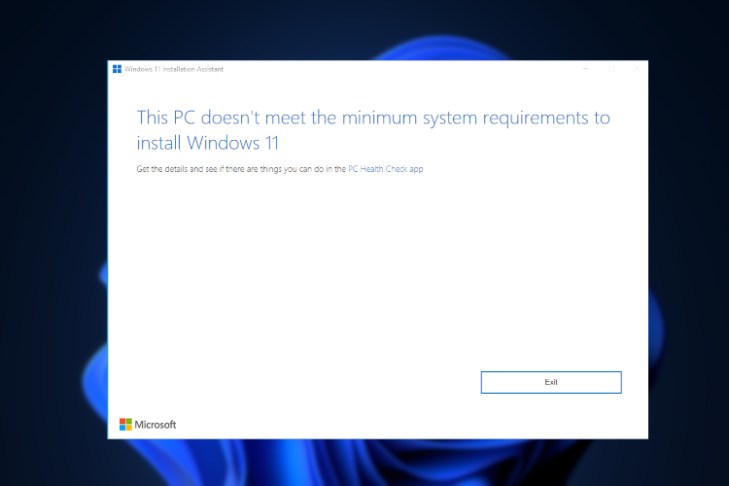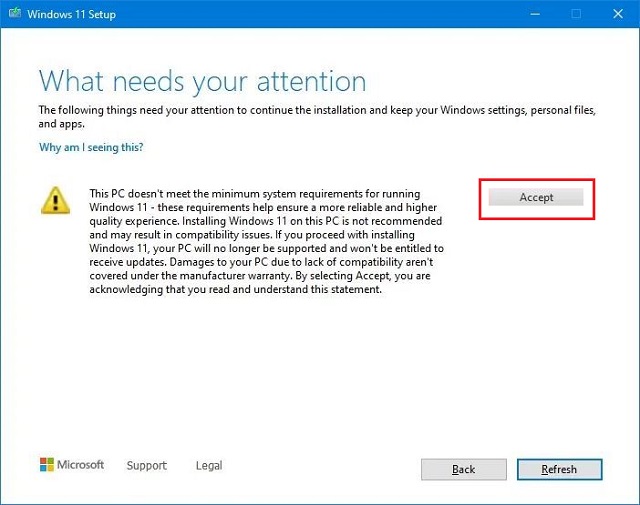
Since Microsoft announced new system requirements for Windows 11, users seek workarounds to circumvent restrictions. Microsoft has relaxed rules to some extent. If you have TPM 1.2, you can bypass TPM 2.0 and CPU check with Microsoft’s official registry hack. Other methods also exist. Here’s an in-depth tutorial to skip all minimum system requirements and install Windows 11 on unsupported systems.
Bypassing Windows 11 CPU, TPM, Secure Boot, and RAM Requirements (2022)
We’ve outlined steps to bypass Windows 11’s minimum system requirements. Use Rufus for a clean Windows 11 installation, removing all restrictions. You can also apply Windows Update on incompatible PCs. Microsoft’s official workaround is included. Expand the table below to navigate.
Bypass Windows 11 System Requirements With Rufus
Rufus, a free formatting utility, creates bootable USB drives for Windows 11 and Linux. It bypasses all Windows 11 system requirements, including TPM, Secure Boot, the 4GB RAM limit, and the online account requirement in Windows 11 Pro and Home.
Let’s learn how to skip minimum system requirements of Windows 11.
1. First, download the latest Rufus (3.18 or later, Free) from this link.
2. Next, get the official Windows 11 ISO from Microsoft’s website (visit) for free. Follow our guide for instructions.
3. After that, plug a USB drive into your PC and run Rufus. It will detect the USB stick. Click “Select” to load the Windows 11 ISO.
4. Here, choose the Windows 11 ISO you downloaded.
5. Then, click “Start” to create the Windows 11 bootable USB drive.
6. Upon clicking Start, a pop-up will immediately appear on the screen allowing you to disable all Windows 11 requirements, such as TPM, 4GB RAM, Secure Boot, and the necessity for an online Microsoft account. Additionally, you have the option to disable data collection and similar functions. Finally, click “OK”, and the bootable flash drive will be prepared within minutes.
Note: Rufus does not bypass the CPU requirement. Additional steps are provided below.
7. Plug the USB drive into your target machine and proceed to clean install Windows 11 as usual. No errors will occur. If your CPU is unsupported, proceed to the next step.
Additional Steps to Bypass Windows 11’s CPU Requirement
1. Users without a Windows 11 supported CPU encountering the “This PC can’t run Windows 11” error need not worry. Simply press “Shift + F10” to open the Command Prompt window, then type regedit and press Enter.
2. This action opens the Registry Editor. Navigate to the following path:
HKEY_LOCAL_MACHINE\SYSTEM\Setup
3. Right-click on “Setup” and select New -> Key.
4. Rename the new key to “LabConfig” and press Enter.
Note: If LabConfig already exists under Setup, proceed directly to step 5.
5. With the LabConfig key created, select it and right-click in the empty space on the left pane. Then, choose New -> DWORD (32-bit) Value.
6. Rename BypassCPUCheck and press Enter.
7. Now, double-click and set the Value data to 1. Click “OK” to close the Registry Editor and Command Prompt.

8. Afterward, click the back button in the top-left.
9. Now, click “Next”, and you won’t encounter the error. This is how to bypass the CPU check on Windows 11.
Bypassing TPM Check During Windows 11 Updates
While users installed Windows 11 on ineligible PCs, official Windows Updates fail due to system requirement checks during dynamic updates. Microsoft has stated it can’t guarantee future updates on incompatible PCs.
If Windows Updates aren’t installing on your Windows 11 PC due to missing requirements, this method can resolve the issue. Developer AveYo created a script that bypasses setup requirements using a Product Server trick. Here’s how:
1. Open the GitHub page of the script and click Code -> Download ZIP in the top-right corner.
2. Extract the ZIP file on your Windows 11 PC and open the folder.
3. Navigate to the “bypass11” folder, right-click “Skip_TPM_Check_on_Dynamic_Update.cmd”, and select “Run as administrator”. If you encounter a security prompt, click More Info -> Run anyway.
4. A Command Prompt window will open, indicating that the bypass has been applied.
5. Now, check for updates on your Windows 11 PC, and you can install them without issues. Before installation, the setup wizard might ask you to accept the risk before updating your incompatible PC. Accept it, and you’re good to go. If it doesn’t work, restart the PC and try again.
6. To remove the bypass patch from your system, rerun the script, and it will be removed instantly.
Bypass Windows 11 CPU and TPM Requirements (Microsoft Official Method)
Aside from third-party methods, Microsoft provides instructions on bypassing CPU and TPM requirements when upgrading from Windows 10 to Windows 11. However, a TPM 1.2 chip is essential for this method. Here’s how:
1. Press the Windows key and type “regedit,” then open the Registry Editor.
2. Paste the following path into the address bar and press Enter:
Computer\HKEY_LOCAL_MACHINE\SYSTEM\Setup\MoSetup
3. Right-click on “MoSetup” in the left sidebar and select New -> DWORD (32-bit) Value.
4. Rename it AllowUpgradesWithUnsupportedTPMOrCPU.
5. Double-click the new key to open it. Enter 1 in the value data field, then click “OK”.
6. Close the Registry Editor and restart your PC to apply the changes. If you’ve downloaded the Windows 11 ISO image, right-click and choose “Mount”.
8. The Windows 11 ISO image will be mounted as an external disk. Open File Explorer and navigate to the mounted drive. Then, double-click “setup.exe” to start the upgrade process.
9. Click “Next” and accept the warning that you’ll run Windows 11 on an incompatible PC. You can now officially upgrade to Windows 11, bypassing the CPU and TPM checks.
Bypass Windows 11 System Restrictions on Unsupported PCs
Here are three easy ways to skip the minimum system requirements for Windows 11. The first method allows clean installation of Windows 11, while the second enables applying future updates. The third method facilitates upgrading from Windows 10 to Windows 11 on incompatible PCs. That’s all from us. If you want to enable or disable Fast Startup on Windows 11, refer to our linked article. For installing Android apps on Windows 11, we have a dedicated guide. If you have any questions, feel free to ask in the comment section below.

Pritam Chopra is a seasoned IT professional and a passionate blogger hailing from the dynamic realm of technology. With an insatiable curiosity for all things tech-related, Pritam has dedicated himself to exploring and unraveling the intricacies of the digital world.



